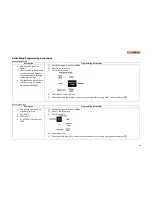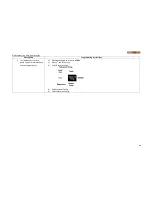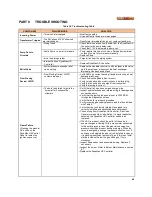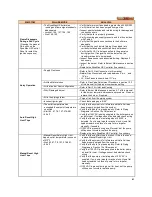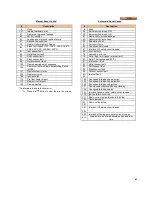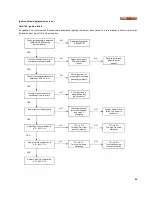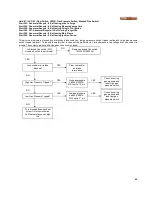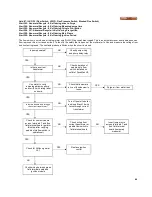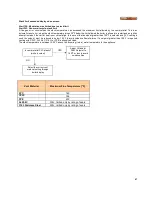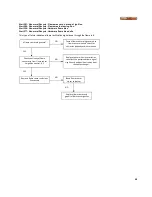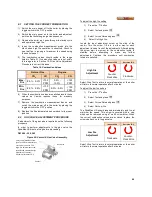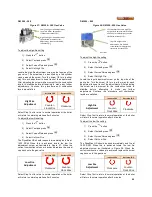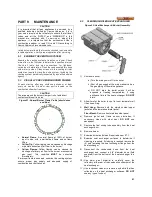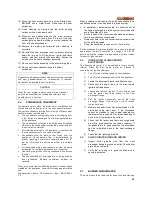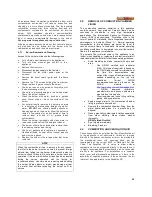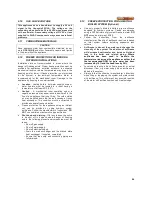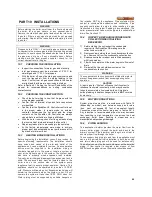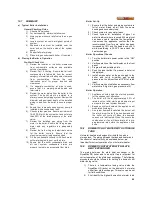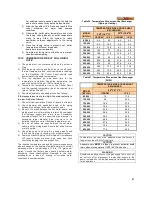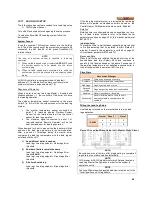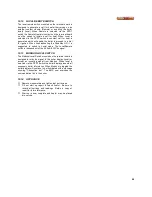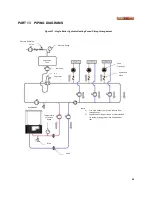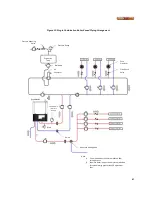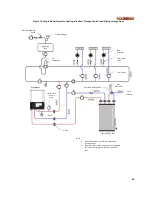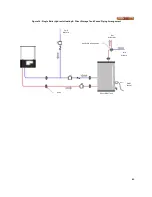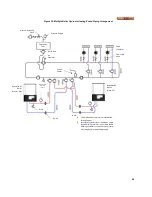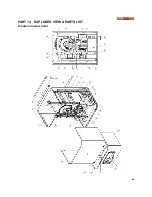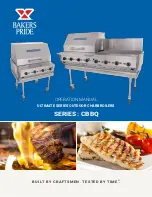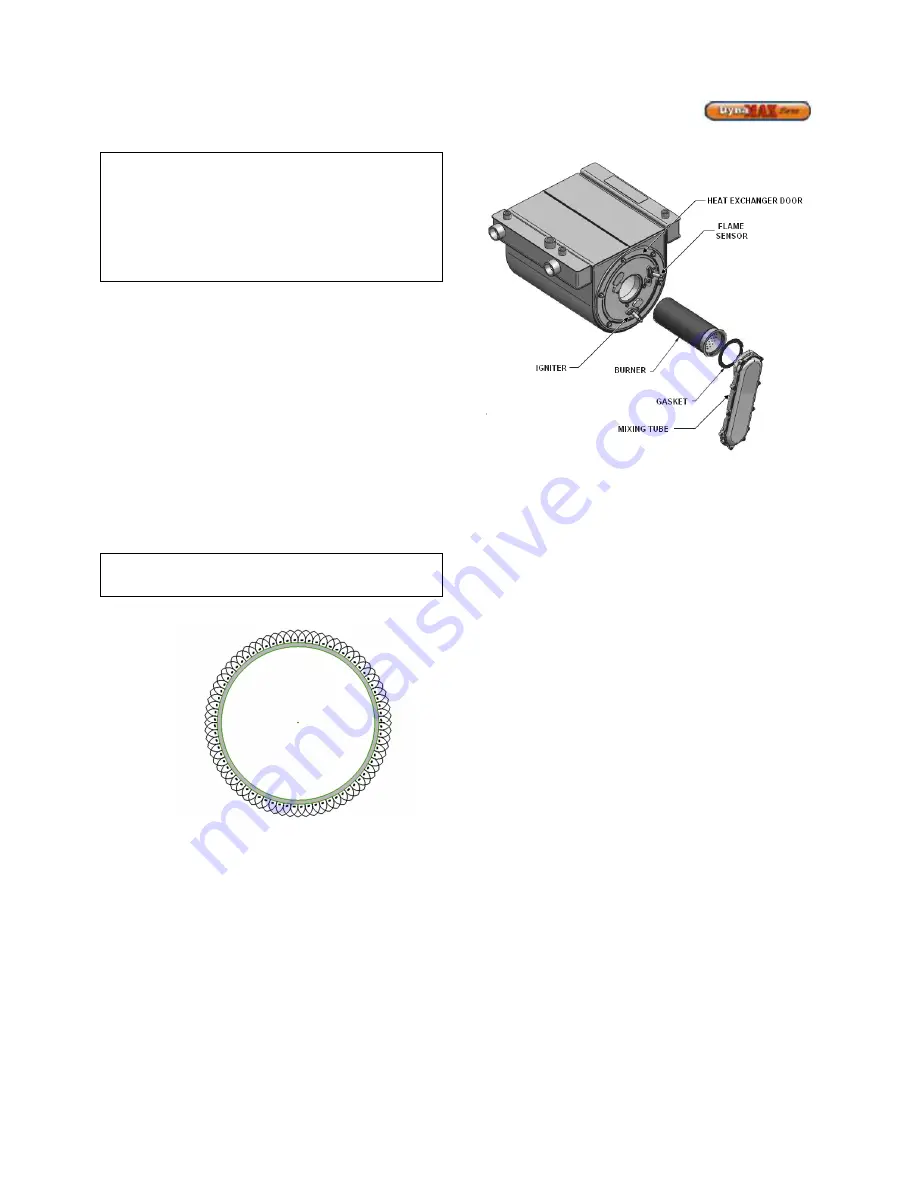
51
PART 9
MAINTENANCE
CAUTION
It is important that all gas appliances be serviced by a
qualified technician trained by Camus Hydronics. It is in
your own interest and that of safety to ensure that all local
codes, and all the “NOTES” and “WARNINGS” in this
manual are complied with. To service or adjust this
appliance, it is imperative that the serviceman utilize a
combustion analyzer to read CO
2
and CO according to
Camus Hydronics recommendations.
Listed below are items that must be checked to ensure safe
reliable operations. Verify proper operation after servicing.
9.1
EXAMINE THE VENTING SYSTEM
Examine the venting system at least once a year. Check
more often in the first year to determine inspection interval.
Check all joints and pipe connections for tightness,
corrosion or deterioration. Flush the condensate drain hose
with water to clean. Clean screens in the venting air inlet
system as required. Have the entire system, including the
venting system, periodically inspected by a qualified service
agency.
9.2
VISUALLY CHECK MAIN BURNER FLAMES
At each start up after long shutdown periods or at least
every six months. A burner view port is located on the
combustion chamber front door.
CAUTION
The area around the burner view port is hot and direct
contact could result in burns
Figure 31: Normal Burner Flame Profile (short dense
and blue)
•
Normal Flame: A normal flame at 100% of burner
input is blue, with a well defined flame and no flame
lifting.
•
Yellow Tip: Yellow tipping can be caused by blockage
or partial obstruction of air flow to the burner.
•
Yellow Flames: Yellow flames can be caused by
blockage of primary air flow to the burner or excessive
gas input. This condition MUST be corrected
immediately.
If improper flame is observed, examine the venting system;
ensure proper gas supply and adequate supply of
combustion and ventilation air.
9.3
CLEANING BOILER HEAT EXCHANGER
Figure 32: Heat Exchanger & Burner Assembly
1) Shut down boiler:
a) Turn the main power off to the boiler
b) Shut off gas supply at the main manual valve in
the gas piping of the main appliance
c) DO NOT drain the boiler unless it will be
exposed to freezing temperatures. If using
antifreeze fluid in the heat exchanger, DO NOT
drain.
2) Allow time for the boiler to cool to room temperature if
it has been firing.
3) Wall Hung: Remove both the stainless steel upper
jacket and the lower sheetmetal jacket.
Floor Mount: Remove front stainless steel panel.
4) Remove igniter and flame sensor electrodes. If
necessary, clean with steel wool. DO NOT use
sandpaper.
5) Remove the fan/ mixing tube assembly from the heat
exchanger door.
6) Remove burner.
7) Examine burner and clean if required as per 9.7.1.
8) Examine heat exchanger surfaces to determine if
cleaning is required. If cleaning is required remove the
(6) nuts fastening the heat exchanger flange from the
heat exchanger.
9) Disconnect the condensate hose from the heat
exchanger and connect a 5/8” diameter hose (field
supplied) from the bottom of the heat exchanger to a
drain
10) Use water proof material to carefully cover the
refractory at the rear of the combustion chamber of the
heat exchanger.
11) Use a vacuum cleaner to remove any debris that has
collected on the heat exchanger surfaces. DO NOT
use any type of solvent.
Содержание DynaMax DMH081
Страница 2: ......
Страница 12: ...7 Figure 5 DynaMax HS Wall Hung Service Clearances Figure 6 DynaMax HS Floor Mount Service Clearances...
Страница 68: ...65 PART 14 EXPLODED VIEW PARTS LIST DYNAMAX HS WALL HUNG...
Страница 69: ...66 DYNAMAX HS FLOOR MOUNT...
Страница 76: ...73 PART 15 ELECTRICAL DIAGRAMS 15 1 DM 80 299 INTERNAL WIRING DIAGRAM...
Страница 77: ...74 15 2 DM 399 800 INTERNAL WIRING DIAGRAM...
Страница 78: ...75...

